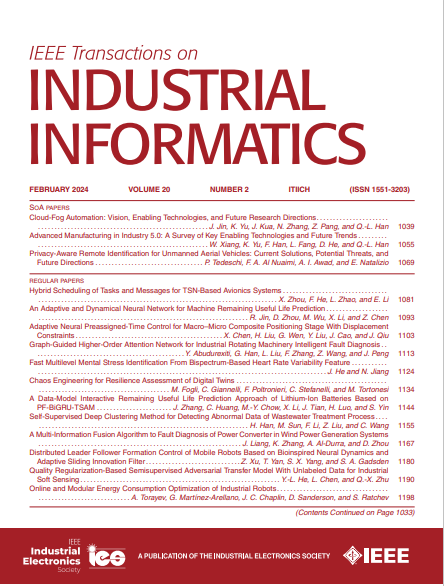智能电网网络物理攻击防护的多阶段对抗博弈
IF 9.9
1区 计算机科学
Q1 AUTOMATION & CONTROL SYSTEMS
引用次数: 0
摘要
智能电网是物理层和网络层相互依存的大规模网络物理融合系统。攻击者只需侵入网络层,依靠其控制功能和级联故障,就能使智能电网瘫痪。为了分析智能电网中对手之间的真实交互,我们提出了一种新的多阶段对抗博弈模型,以保护智能电网免受网络物理攻击。攻击者可以破坏网络层的区域控制中心,防御者可以加强物理层节点。该博弈的求解基于Minimax-Q算法。在这个多阶段的游戏中,攻击者和防御者都可以积极参与游戏,并最大化他们的最小奖励。利用级联故障和最优减载来设计奖励函数。将该模型应用于IEEE 39总线系统,并与非对抗性博弈进行了比较。当防御者为被动玩家时,攻击者进行两次操作后,负载损失为52.48${\ mathm{{\%}}}$。当防御者是主动玩家时,至少需要4对对抗行动才能造成50${\ mathm{{\%}}$的负载损失。结果表明,对网络层的攻击具有更大的破坏性,并产生了各种防御策略。本文章由计算机程序翻译,如有差异,请以英文原文为准。
Multistage Adversarial Game for Cyber-Physical Attacks Protection of Smart Grids
A smart grid is a large-scale cyber-physical fusion system where the physical layer and the cyber layer are interdependent. Attackers only need to invade the cyber layer, relying on its control function and cascading failures, to paralyze the smart grid. To analyze the real interaction between adversaries in the smart grid, we propose a new multistage adversarial game model that protects smart grid against cyber-physical attacks. Attackers can destroy the regional control center of the cyber layer, whereas defenders can strengthen the physical layer nodes. The solution of such game is based on the Minimax-Q algorithm. Both attackers and defenders can actively participate in the game and maximize their minimum rewards in this multistage game. Cascading failures and optimal load shedding are utilized to design the reward function. We apply this model to IEEE 39-bus system and compare it with a nonadversarial game. When defenders are passive players, the load loss is 52.48${\mathrm{{\% }}}$ ${\mathrm{{\% }}}$
求助全文
通过发布文献求助,成功后即可免费获取论文全文。
去求助
来源期刊

IEEE Transactions on Industrial Informatics
工程技术-工程:工业
CiteScore
24.10
自引率
8.90%
发文量
1202
审稿时长
5.1 months
期刊介绍:
The IEEE Transactions on Industrial Informatics is a multidisciplinary journal dedicated to publishing technical papers that connect theory with practical applications of informatics in industrial settings. It focuses on the utilization of information in intelligent, distributed, and agile industrial automation and control systems. The scope includes topics such as knowledge-based and AI-enhanced automation, intelligent computer control systems, flexible and collaborative manufacturing, industrial informatics in software-defined vehicles and robotics, computer vision, industrial cyber-physical and industrial IoT systems, real-time and networked embedded systems, security in industrial processes, industrial communications, systems interoperability, and human-machine interaction.
 求助内容:
求助内容: 应助结果提醒方式:
应助结果提醒方式:


